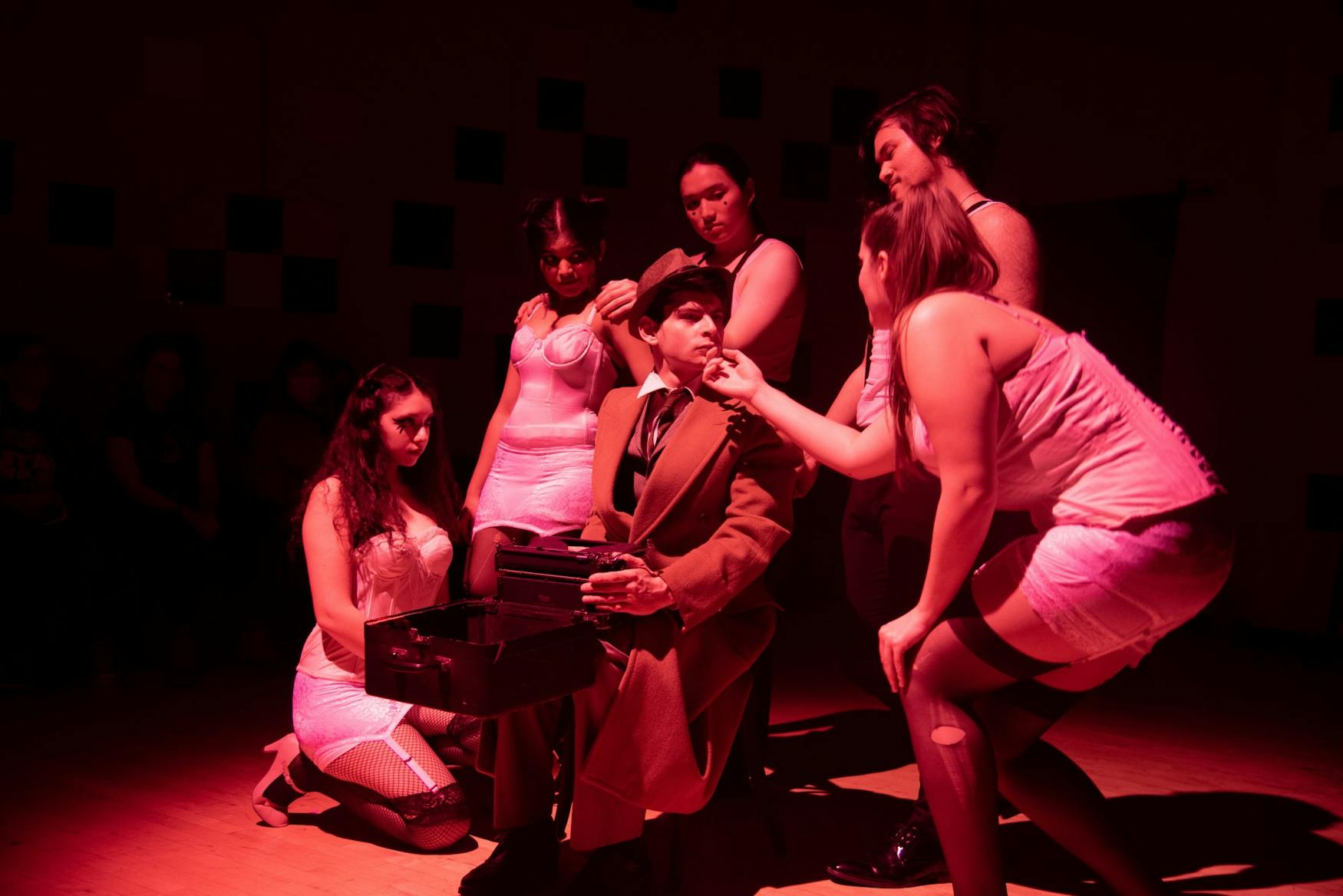‘CABARET’
The Freeplay Theater and the Undergraduate Theater Collective put on a production of Cabaret over the weekend in the Merrick Theater. The show, directed by Ruthi Wasserman ’22, added a current events flair to its ending.

Cabaret is set in Berlin, Germany and begins during the economic recession following World War I. The show opens with the Emcee, played by Nicholas Kanan ’23, welcoming the audience to the production with the song “Willkommen.” As written in Dara Anhouse ’24’s program notes, throughout the course of the show, as Nazism begins to take over Berlin, the Kabarett in the show, the Kit Kat Klub, becomes a place where people can go as a way to escape what is happening outside.

While none of the actors particularly stole the show, the standout performance from Cabaret was by Kanan, who added bits of comedy in the right places. Kanan’s demeanor shifts throughout the musical showed the audience his character’s development when Nazism was beginning to take over Berlin, as well as the development of majority of the characters on stage. Kanan was able to sing the challenging Kander and Ebb score very well.

I also wanted to point out the performances by Leila Haller ’25, who played Lulu and Fráuline Kost, and Emily Bial ’25, who played Sally Bowles. Both of them did a really great job at singing and acting.
The Merrick Theater, which is the equivalent of a black box theater, does not give much capability for scenic design; thus, many productions that are staged in there utilize acting blocks and the audience’s imagination as a way of telling the story. While Cabaret did use acting blocks in some of the scenes, there were other elements of scenery involved in the show that enhanced the audience’s experience watching the show. The Emcee says the line “in here, life is beautiful” during the opening number, talking about how people can come to the Kit Kat Klub to escape the outside world. I really liked the way that this was showcased, which utilized the entirety of the space. There were perfectly even black and white tiles on the back wall. However, as the audience shifted attention to the other walls of the space, the tiles began to become less organized. From where I was sitting in the front middle of the audience, the unified tiles were the backdrop for the façade of the perfect world inside the club, and the other tiles were used to denote the messed up world that was happening outside of the club. It is clear that there was great collaboration between Wasserman and the set designer of the show, Julia Birnbaum ’22.

The choreography of the show by Destiny Kluck ’25 and Irina Znamirowsky ’24 was nothing to write home about. It served the purpose of a classic night club scene, but there was nothing through the movements that furthered the plot. On the other hand, the lighting, by Judy Li ’24 and Nolan Kocsi ’25, added creative elements to the show, especially with the spotlights on the Emcee at the beginning of the acts, the silhouetted lighting on Sally Bowles during her solos, “Maybe This Time” and “Cabaret,” but most notably the green flashlights during “Money.”

While Cabaret typically has an orchestra with brass and reed instruments, the three-piece orchestra for this production, led by music director Milo Rosengard ’22, had a sound that complemented the vocals on the stage.

When I first heard at the beginning of the semester that they were going to be putting on Cabaret, I could not help but ask why this show is something that is relevant to the times that we are living in. Wasserman wrote in her program notes that she decided to put on this show because of the recent rise of antisemitism in the United States. In a surprise ending to the classic, the Emcee unveiled that he was wearing blue and white striped pajamas, similar to those of what were worn at Auschwitz, at the same time that a screen showing a compilation of videos from televised news stories from the past year was revealed behind a curtain. In an email to the Justice, Wasserman wrote, “I had [Kanan] reveal the prisoner uniform simultaneously with the reveal of the video to draw parallels between then and now and to shake the audience’s perception of past, present, and future.”
Overall, with the performances and the additional touch of current events, I thought that this was a great production of Cabaret.



Please note All comments are eligible for publication in The Justice.